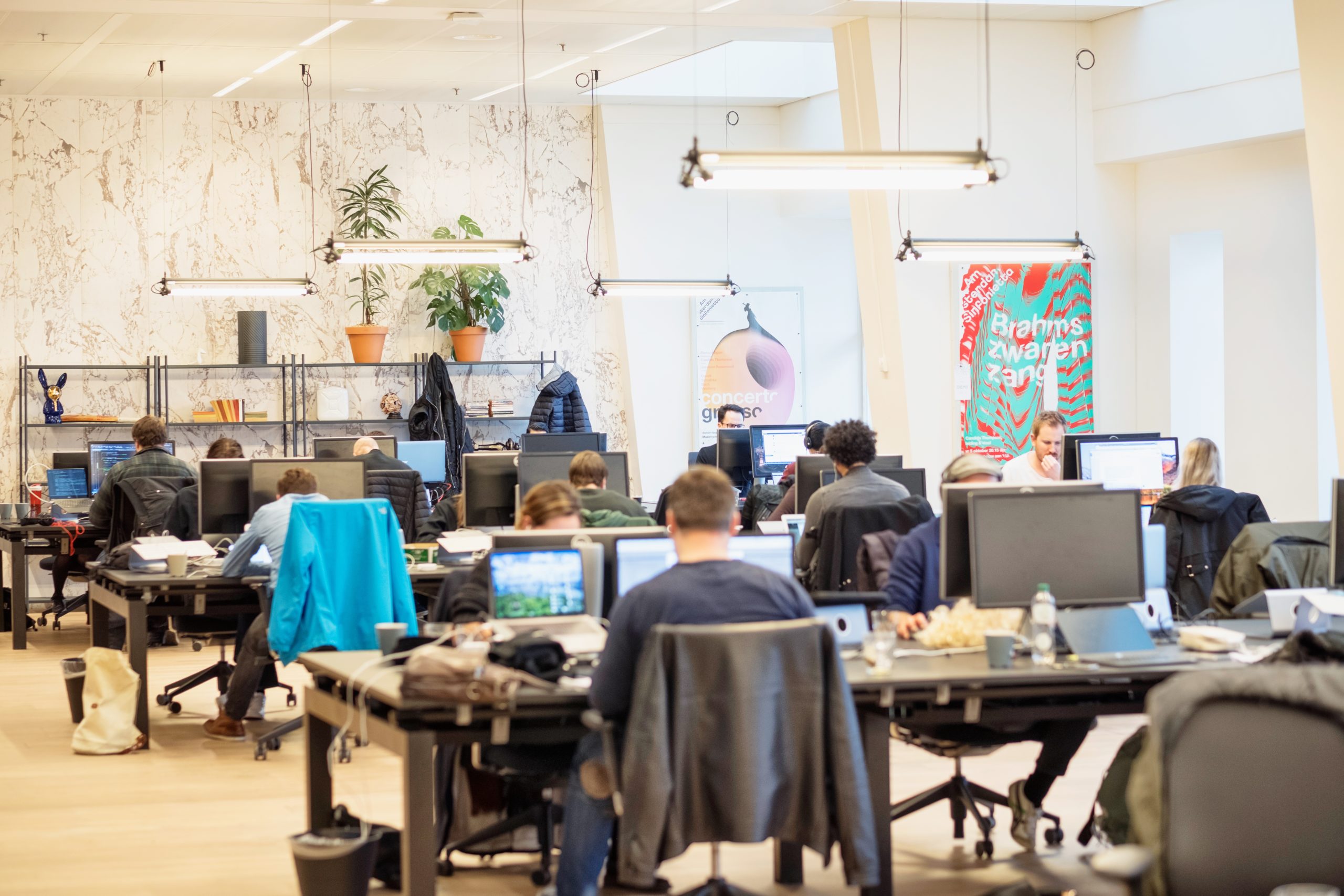The speed by which your organisation becomes tech-driven, is mostly determined by your available workforce. Locating and attracting top talent is hard enough but retaining them can be just as tricky. The following practical methods will help you build and develop your tech workforce efficiently.
What tech talent wants
To differentiate in a crowded job market, competitive pay and benefits, a strong purpose and interesting career path opportunities are not always enough. Bain & Company analysed the Glassdoor ratings of American tech companies and found three emerging factors that strongly influence where the most talented candidates want to work:
- Transparent and accountable senior management
- Culture of coaching and development
- Commitment to diversity and inclusion
LinkedIn confirms these findings in its report How to Attract and Retain Top Technology Talent, which lists concern for career advancement as the number one reason why tech people left their old job. Other reasons given are unsatisfied with the leadership of senior management, unsatisfied with the culture and wanting more challenging work. Dissatisfaction with the compensation and benefits only comes fifth. Interestingly, among the reasons for joining a new job are a better fit for my skills and interest, and more ability to make an impact.
At DEPT®, we see impact as an important factor for young people to change jobs. Focus on craftsmanship, delivering excellent work and doing something that is noticeable in daily life are all a part of this. That’s why it’s important for organisations to make the work of the employees visible and celebrate success together. Not only the designers and marketers should be put in the spotlight, but the tech people who worked under the hood of the app or webshop as well. Recognition of the work done is an essential motivator for all involved.
Remotely and high performance
A major shift in benefits has been the ability to work remotely. If Covid-19 has shown us anything, it is that working remotely is not a consideration anymore but a given. The good news is that there now is a bigger pool of digital professionals you can tap into. The bad news is that everyone can do so; competition for certain IT or digital skills can be exceptionally intense. So, your offer has to match the candidate’s personal situation. Benefits like free laundry and comped lunches won’t carry much weight for a developer who wants to work only one day at the office. A key perspective to give your new hire is the way of working, especially when done partly or wholly remote. How do you let people work effectively together online? How do you bridge space and build culture?
To enable high-performing remote work, it’s essential to change the way your people collaborate and communicate. The weekly physical meeting with the ‘coffee-machine-small-talk’ will leave out the colleague that is unable to join, for example. As distances between team members increases, it becomes more difficult to share knowledge and experiences. It will also become harder to keep progress because you can’t assume autonomy goes hand-in-hand with responsibility. Without the physical presence of a Project or Delivery Manager breathing down your neck, ownership may be lacking. So, how do you build a productive remote team that pulls together?
‘Tools, process and culture’
Frank Tetteroo, Digital Program Manager at DEPT® Agency:
“Start by setting clear job descriptions. This will not only help you to hire the absolute best fits but it also offers clarity to the professionals during the recruitment process. You need to have the technology stack, the upcoming roadmap, the stakeholders and the budget acutely outlined. Based on these four elements, you can create job descriptions and a team matrix that clearly states what kind and how many digital professionals you will need.
As new members enter the existing team dynamics, it’s important to assess the current way of working. The key here is to assess if the current way of working is the right way forward. Don’t be hesitant to change the way you collaborate to accommodate new remote team members.
These changes are made on three levels: tools, process and culture. For tools, align with the team on what they need. Consider having a personal hardware budget for all team members, for example. As a new way of working, make sure you apply strong, regular feedback loops within the team to improve step by step. And lastly, culture. Don’t just hop on a call and dive right into the agenda. Spend time on small talk, commit to team building sessions and consider creating team rituals that help each person to get to know each other.”
Developing digital skill sets
The most valuable intangible assets of any company are the employees, but only if you empower them to accomplish work towards the organisation’s goals. Keeping track of competencies and motivating employees to continue developing is a great way to build the skill sets necessary. And it’s not just the employers who want to develop digital skills, it’s also the employees themselves. They are more willing to learn, reskill and change than managers may initially think. The reason for this is simple: as employees they want to stay relevant and in high demand; developing their digital skill sets is the best way for this.
Inclusion and diversity
If you are not inclusive enough as an employer, you are likely not going to win the war for tech talent. Especially in tech, it’s essential to bring people with diverse cultures and backgrounds together. The digital products and platforms they create will generally be used by various end-customers worldwide. If the product development team has been lacking diversity, you may miss out on an important part of the market or deliver a product of poorer quality.
Face recognition is a good example of this. Commonly, face recognition algorithms boast a classification accuracy of over 90%. However, the poorest accuracy is found in subjects who are female, black and between 18 and 30 years old. When used for police surveillance, as The Atlantic explains, this is likely to result in innocent citizens being marked as suspects in crime. Another issue comes with including international talent. With digitisation comes globalisation, meaning that your digital teams are likely to attract workers from other countries. Holding on strictly to your own language and company culture can make it harder for international talent to fit in.
‘Make space in your company culture’
Sandor Voordes, Head of Engineering at Dept:
“A company culture that requires a high performance will come with certain expectations towards its employees. For example, they need to take ownership, be proactive, communicative and aim for personal improvement. But not everyone has that mindset. And while you are looking for a cultural fit, you may end up ignoring a certain group. Perception of people can end up taking precedence over their quality. When people are more introverted or don’t have the longing to participate in all sorts of growth paths, they are less likely to be selected.
This is a shame, because they may very well be excellent coders. I see an interesting opportunity here for a lot of companies, but only if they are able to make space in their company culture for those tech people who need a little more guidance.”
Questions?
Programme Management Lead





